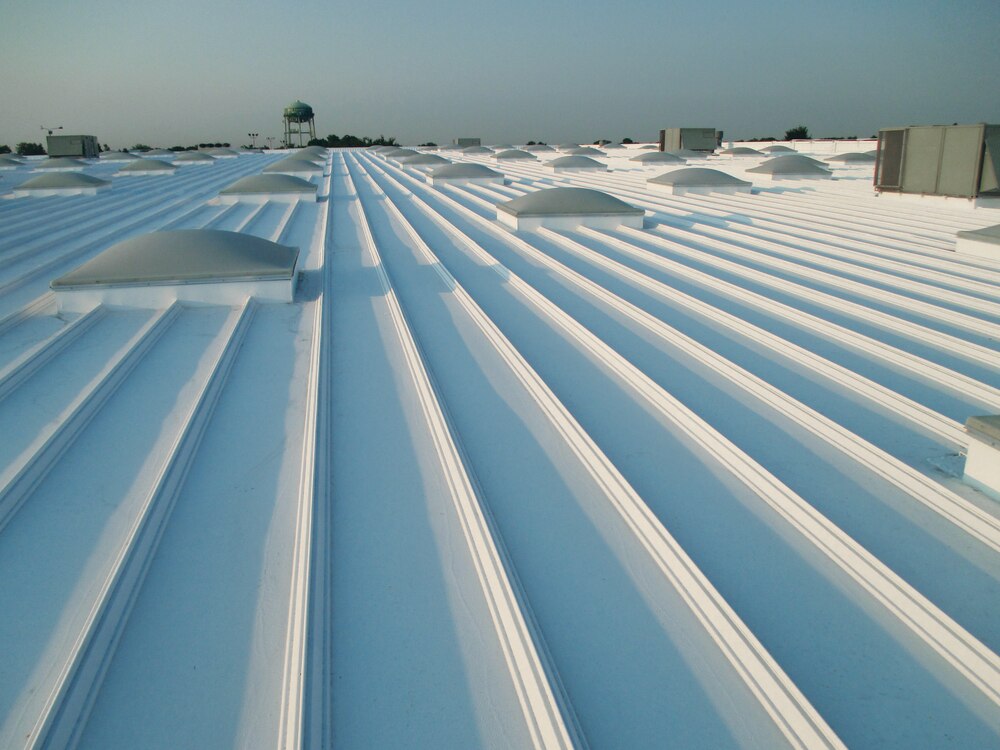Metal roofs are generally known for their low maintenance, aesthetic appeal, and a finish that protects them from sun and water damage. However, after many years, that finish may fade or deteriorate. Then the building owner must decide whether to restore or replace their roof.
While there are some situations when replacement is necessary, metal roof restoration may be more accessible than many people think. And restoring your customers' metal roofs instead of replacing them could lower their overall costs while saving time and labor expenses for you.
When Should You Recommend Replacement?
Before you begin considering restoration options, you need to assess whether the roof is even a candidate for restoration. If one or more of the following issues are present, the roof is probably not a good candidate for restoration and should be replaced:
- The roof is not structurally sound. If the metal has rusted or corroded in areas that weaken the structural assembly, then portions of the roof may need to be replaced.
- There are leaky roof flashings and connections. Any potential leaks need to be addressed before attempting to restore the roof. If flashings are not watertight, they will need to be removed or replaced.
- The existing metal roof's finish shows significant deterioration. Significant rust or damage is a sign of a potential roof failure.
Benefits of Restoration
There are several potential advantages to metal roof restoration.
The first is the cost of restoration. It's usually less expensive to restore a metal roof than replace it. Restoration also doesn't affect the occupants of the building as much, and it doesn't require exposing the structure to the elements.
In addition, restoration can extend the life of a metal roof. A roof may often be restored more than once as long as the metal roofing system remains structurally sound. This can save you and your customers hassles and money in the long run.
There may be environmental benefits to choosing restoration as well. By opting to repair the roof instead of replacing it, you're sending fewer materials to landfills. Reflective roofing colors, like white, can also help reflect the sun away from the roof and lower the temperature of the roof.
A Five-Step Process for Commercial Metal Roof Restoration
So how do you go about restoring a metal roof? One reliable method is to coat the roof with a liquid-applied membrane system. This type of system offers easy application with minimal tools or accessories, helping to protect a structurally sound metal roof from the damaging effects of UV and weather.
Here are the basics of restoring a roof this way:
- Clean the roof surface using brooms, scrapers, and a pressure washer. Be sure to remove any loose debris or old coatings. You'll need a smooth, dry surface before you begin the restoration process.
- Test adhesion to the roof structure by applying a little base coat and polyester fabric and allowing it to dry. If the product doesn't adhere correctly, then a primer coat will be needed.
- Prep flashings and joints using the polyester fabric and a flashing sealant. Paint on a layer of sealant with a brush, lay a 12-inch wide piece of fabric over the flashing or joint, and then paint on another layer of sealant. Smooth the fabric to make sure there are no air pockets or wrinkles, completely sealing the flashing or joint.
- Apply the base coat to a small area of the roof using a roofing brush. Roll the non-woven polyester fabric on top, then apply another layer of base coat. Remember to smooth the fabric to eliminate any air pockets. Then continue to apply the base coat and fabric until the roof is covered. Overlap the sides of the fabric rolls by four inches and overlap the end of a roll by six inches. Let this layer dry for 24 hours.
- Cover the entire roof structure with the finish coat using an airless sprayer, with coverage as per the product specifications. Let the finish layer dry for 24 hours and then apply another finish coat.
Coating systems such as GAF's HydroStop PremiumCoat Roof System provide a weather-tight seal on existing metal roofs, protecting and extending the life of the existing metal roof. Once restoration is completed, a metal roof will often last several years before it has to be restored again—helping to provide peace of mind to both you and your customers.

